In the seventies, Ford tried to reimagine the Mustang as a smart and sporty coupe that put style and economy over performance substance, but soon realized their error. The resulting attempts to shift the Mustang back to genuine American sports car-slash-hairy-chested muscle car people expected were the absolute embodiment of misguided malaise-era baloney.
The magnum opus of Ford’s baffling pony-car punch-up attempts was the Mustang II King Cobra. If you’ve ever scoffed at a six-cylinder Mustang or even the current turbo-four as less-than offerings for poseurs, well, they’re fire-breathers compared to the “appearance package” shenanigans Ford was getting up to with the stickerfest that was the King Cobra.
You Ain’t Seen Nothing Yet
Let’s face the facts, and the inconvenient truth: the much-lambasted Mustang II was easily one of the most successful Ford products of the seventies (of any decade, really) and also easily one of the most popular Mustangs in terms of production numbers, despite current opinions.
As I wrote some time back:
This maligned machine might be forever seen as a failure in enthusiasts’ eyes, but it certainly failed upwardly back in the day. Introduced right in the teeth of the 1973-74 energy crisis, you couldn’t have asked for a better car for the times. Replacing the larger, gas-guzzling previous generation with a Pinto-based four- or six-cylinder powered version that was a foot and a half shorter than the earlier car might have irked Mustang faithful, but 386,000 other buyers didn’t care and bought a Mustang II in the first year of production alone (not that much less than the 418,000 of the initial year of “OG” 1964 1/2 ‘Stang).
Indeed, the sales figures for the first-year Mustang IIs was the fourth best-selling year ever for the Mustang, right after the 1965-67 models.
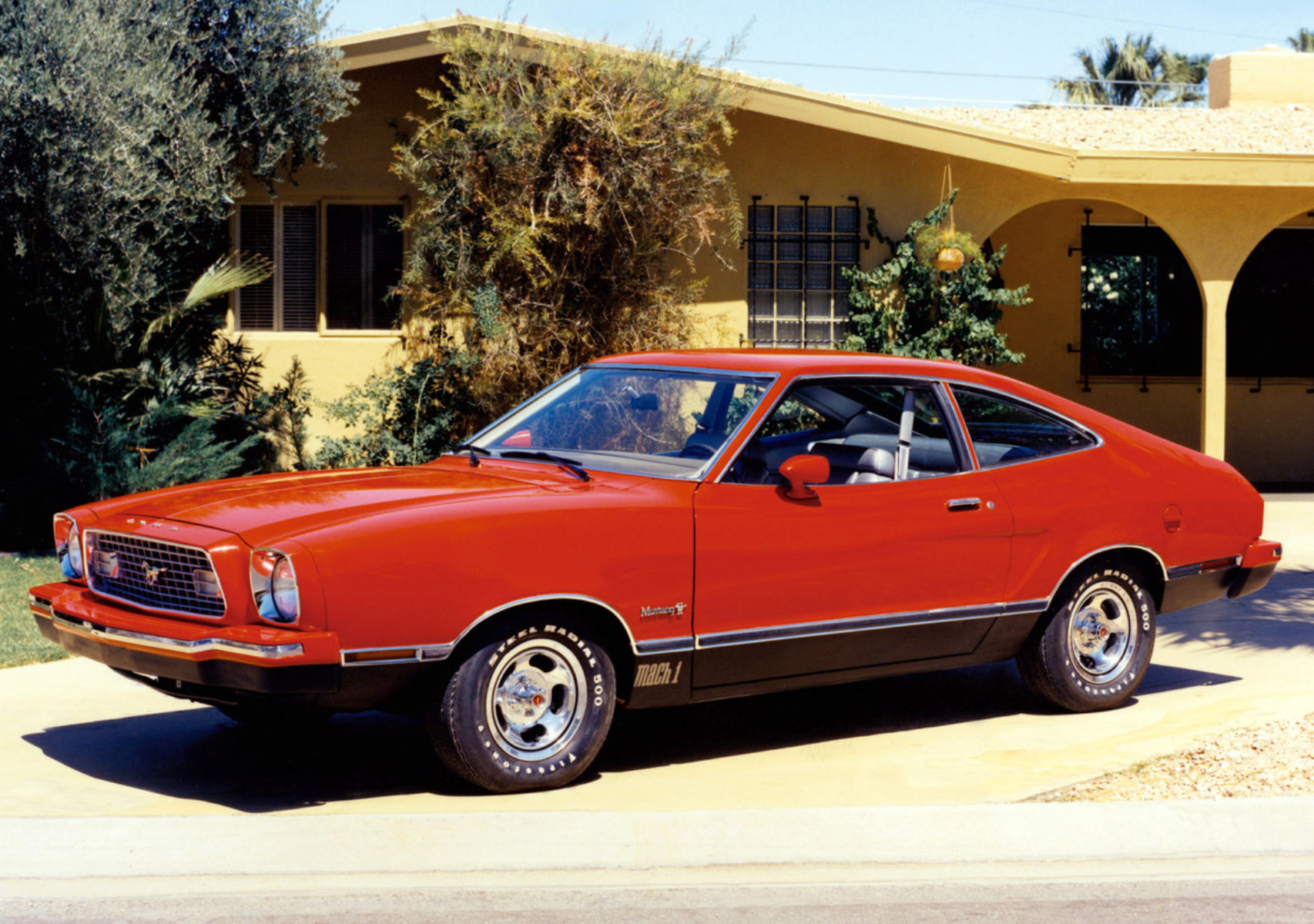
Everyone complains that the Mustang II isn’t a “real” Mustang, and there’s a reason for that: it was never meant to be a “real Mustang.” Ford President Lee Iacocca and product planner Hal Sperlich felt that the market was changing, and with increased fuel costs and emissions controls, the days of the old-school pony car were done. With the death of the AMC Javelin, Dodge Challenger, and Plymouth Barracuda in 1974, it would seem they were right. The fact that Ford didn’t even offer a V8 option in the first year of the Mustang II must have made that direction clear. The buying public didn’t seem to mind, since those stratospheric sales numbers dwarfed the figures of the Chevy Camaro and Pontiac Firebird, the only remaining “real” pony cars.
With the rise of new imported products like the Toyota Celica, Opel Manta, VW Scirocco, and Mazda RX-3 coupe, Iacocca and Sperlich were aware that the future of the industry was in small sport coupes based on more volume compacts. Using the popular Pinto’s underpinnings with its four-cylinder and V6 engines combined with a rack-and-pinion steering front end, the Mustang II was also poised to hit the challenge of the upcoming Chevy Vega-based Monza 2+2.
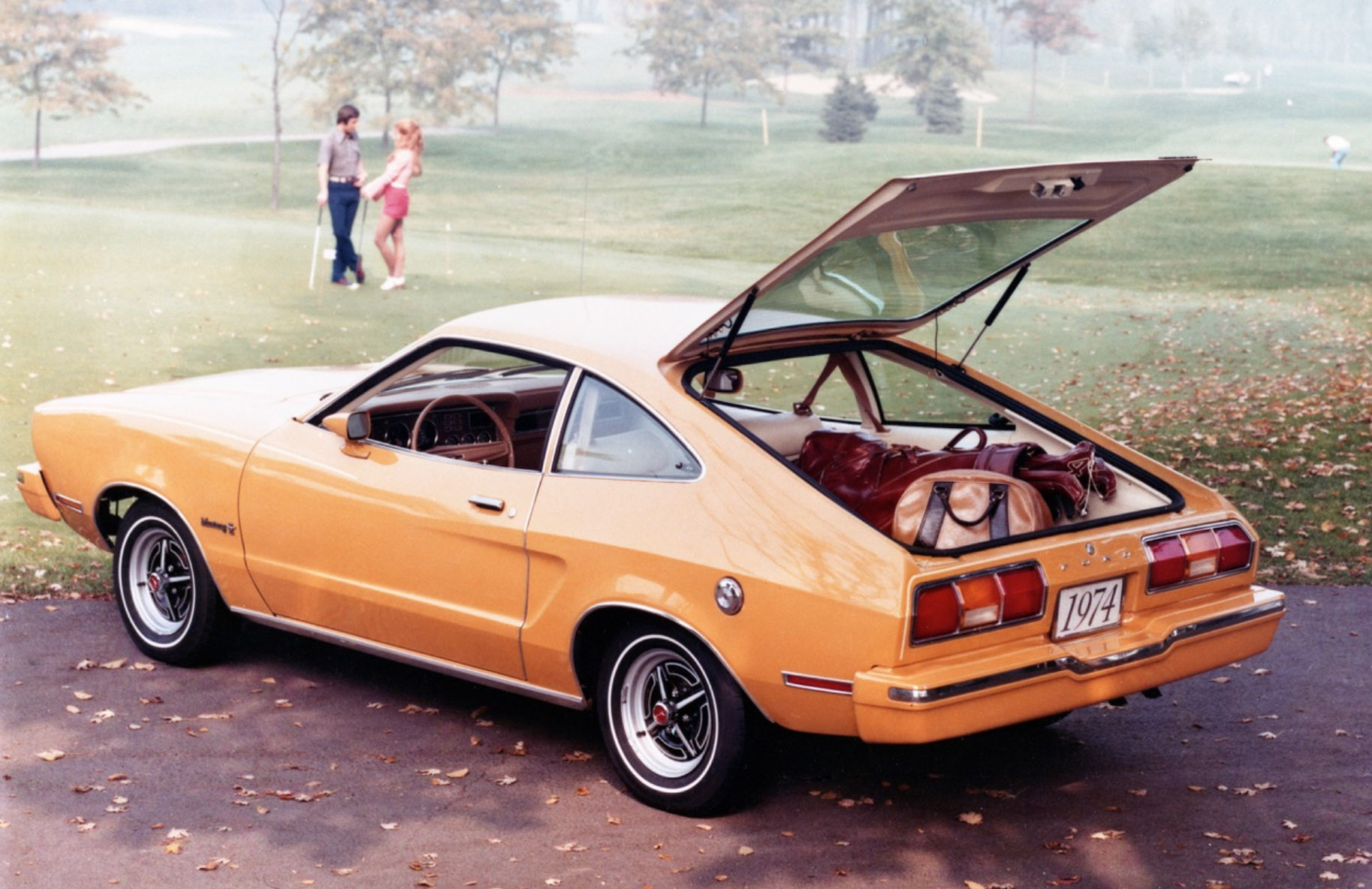
Using the Mustang name was a double-edged sword for Ford, however, since capitalizing on the pedigree probably helped sales as much as it disappointed fans of the icon. This seems to have come back to bite them, as I mentioned in a post from a while back:
Despite the incredible 1974 sales numbers for the Mustang II, in the later model years Ford wasn’t able to move half as many cars. In 1977, when 153,000 units sold, the Camaro was able to beat the Mustang in the sales race for the first time. Sales rebounded slightly for the final year in 1978, but the GM rival continued to hammer the poor PintoStang.
Mustang II Sales:
1974 386,000
1975 188,500
1976 187,500
1977 153,000
1978 192,500
Clearly, Ford had to look at some options to deal with the drop in sales. They could simply let the Mustang become the “small personal car” (ugh) that the first 1974 ads called it. Or, the Blue Oval might try to make the Mustang II more sophisticated to emulate something like the Datsun 260Z.
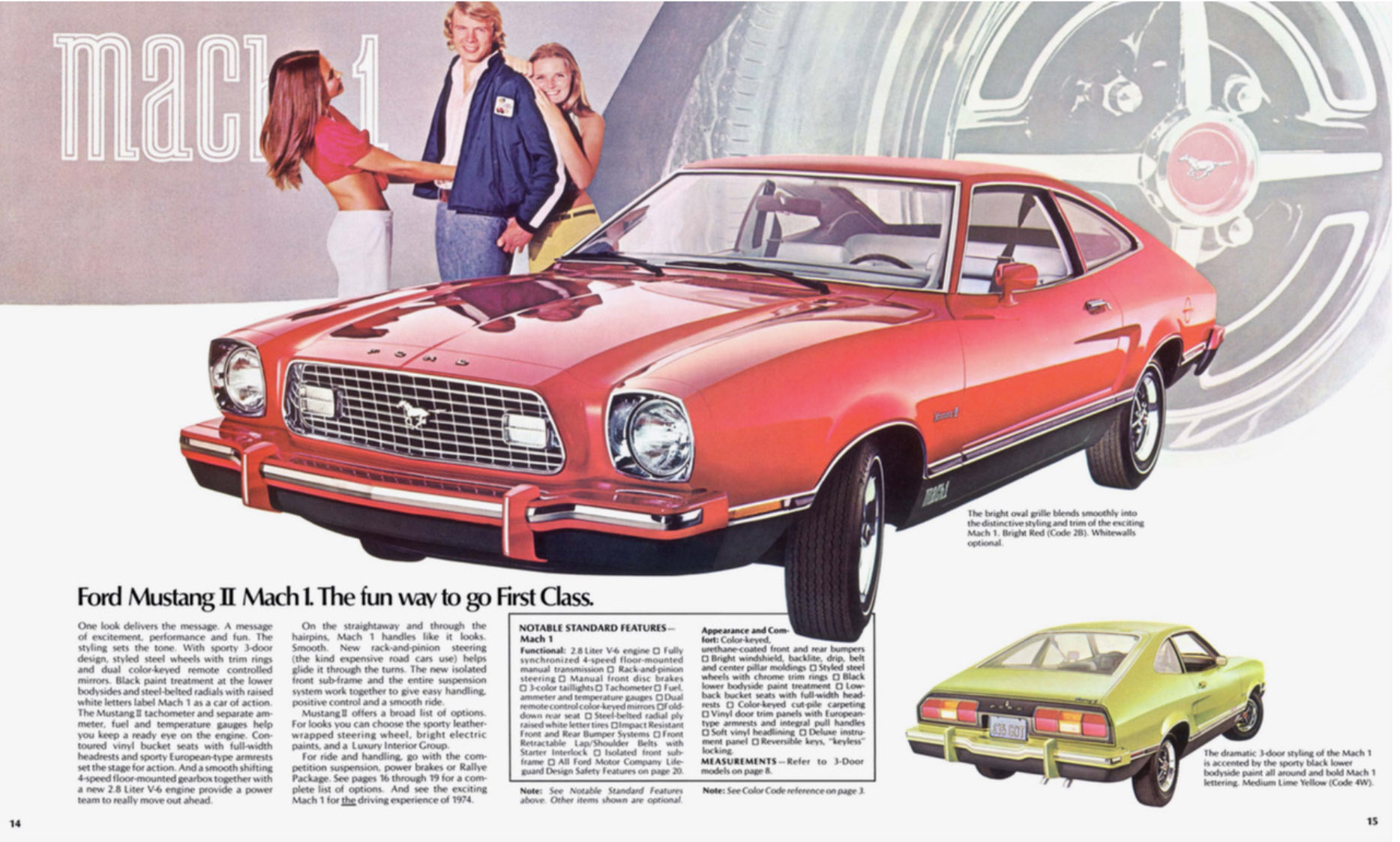
Unfortunately, Ford decided that making a hawk out of a duck (or attempting to, at least) was the way to go. This is where things took a turn for the worse, and the Mustang went headlong into its lost weekend.
More, More, More
Ford 1975, Ford addressed the lack of a V8 option in the Mustang, something it wasn’t designed for in the first place, and a spec that required some changes to the engine compartment. The two-barrel 302’s 140 horsepower was certainly more than the 105 provided by the 2.8-liter V6, but the bigger engine came with more weight. Consumer Guide found that the added heft negatively affected handling, and the still-rather-sluggish performance wasn’t worth the drastic drop in fuel economy. In fact, the magazine ranked it dead last in their Low-Priced Sport Cars category. After this roasting by the press, Ford decided that to make a proper enthusiast’s coupe, they needed to ditch the old and heavy small block in favor of a lightweight turbocharged V6 or a twin-cam four, and the rest is history as we still enjoy these fantastic Mustangs today.
No! Just kidding! This was the heart of the malaise era, so you can bet that Ford just went all-out on half-assing it by simply sticking “performance appearance” garbage all over the same molasses-slow Mustang II. Initially, Ford farmed out the job of plastic-and-tape-stripe customizing to a firm called Motortown, the firm that was also responsible for the Pontiac Can Am I wrote about some time back.
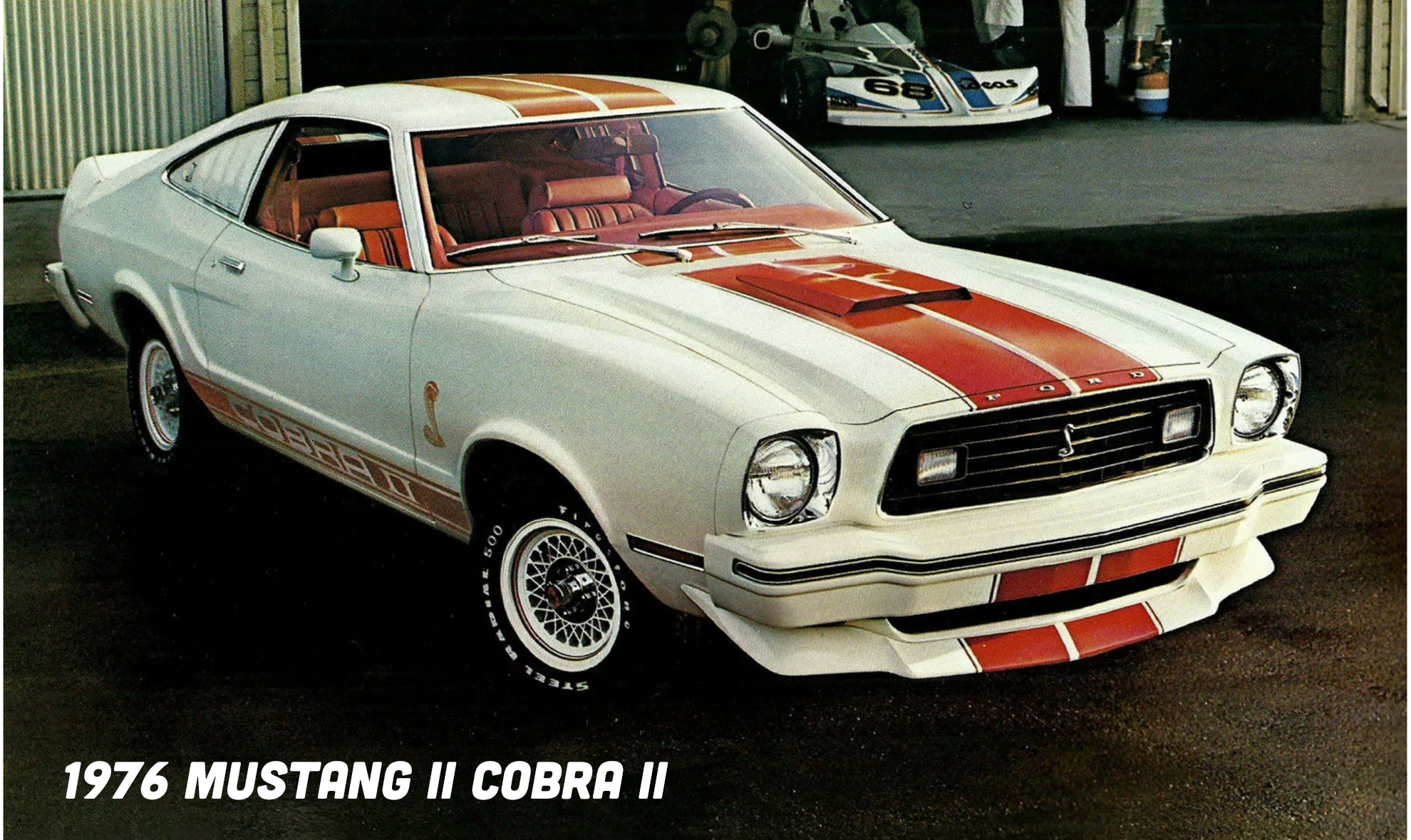
The end result of this work was the redundantly titled “Mustang II Cobra II” appearance package. Yes, that’s right: it was an “appearance package,” so that meant the “competition suspension” or other chassis upgrades were not part of the program unless you ticked the right boxes. You basically got the blacked-out grille, fake hood scoop, front and rear spoilers, quarter window louvers, and racing stripes mimicking the first-generation Shelbys.
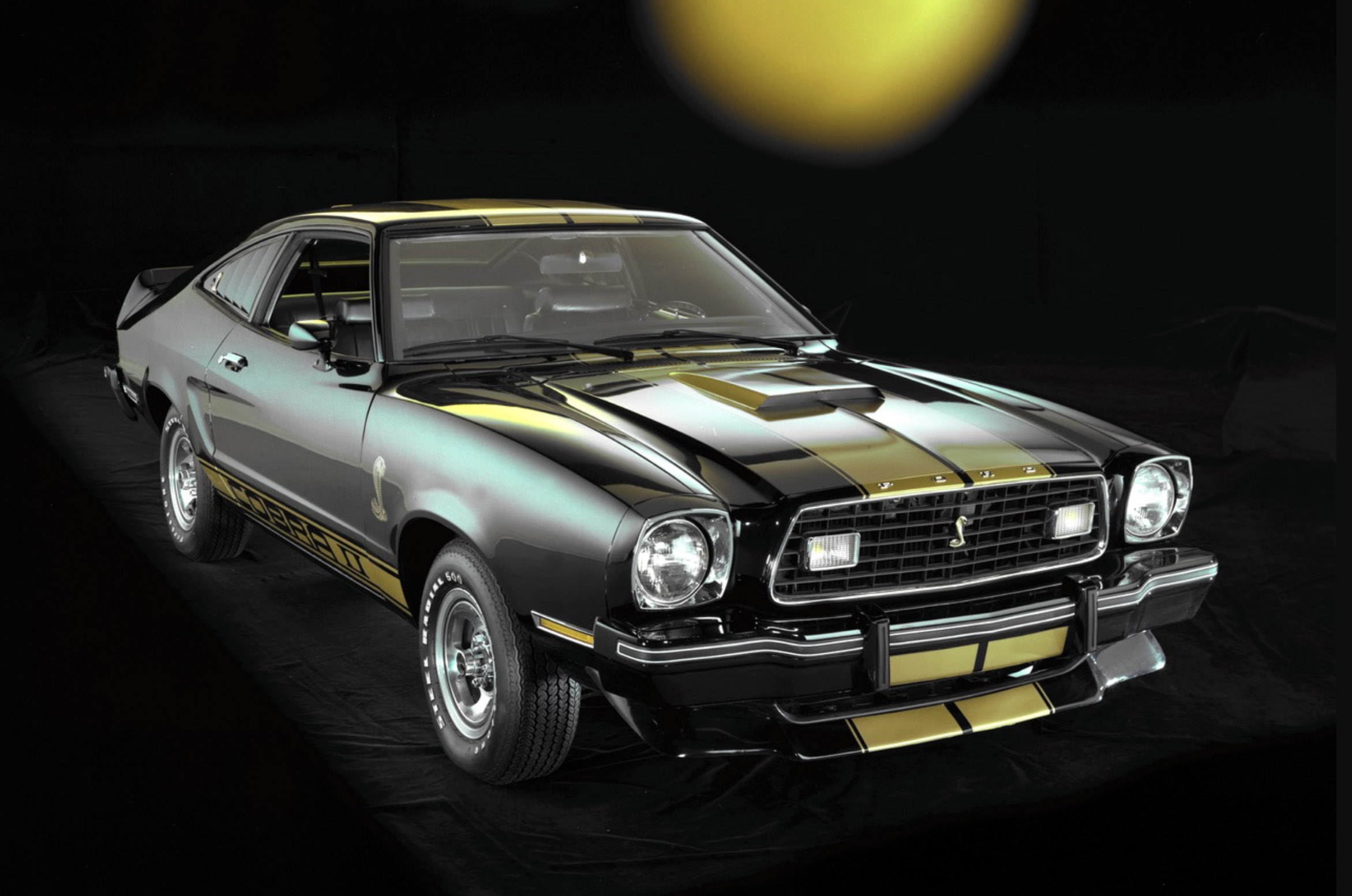
As superficial as these additions were, the polyester-bell-bottom-wearing disco fans of the day loved the thing. The popularity was driven not by success on the track – heavens no – but more by its appearance in the TV show Charlie’s Angels. I felt so bad for Kate Jackson’s character, who was stuck with a Creamsicle Pinto, while Jaclyn Smith got a Band-Aid color Mustang II, and Farah (need I even give her last name?) climbed into a Cobra each week. Ford is talking about their upcoming “universal platform” car, but it looks like they were already doing that fifty years ago:
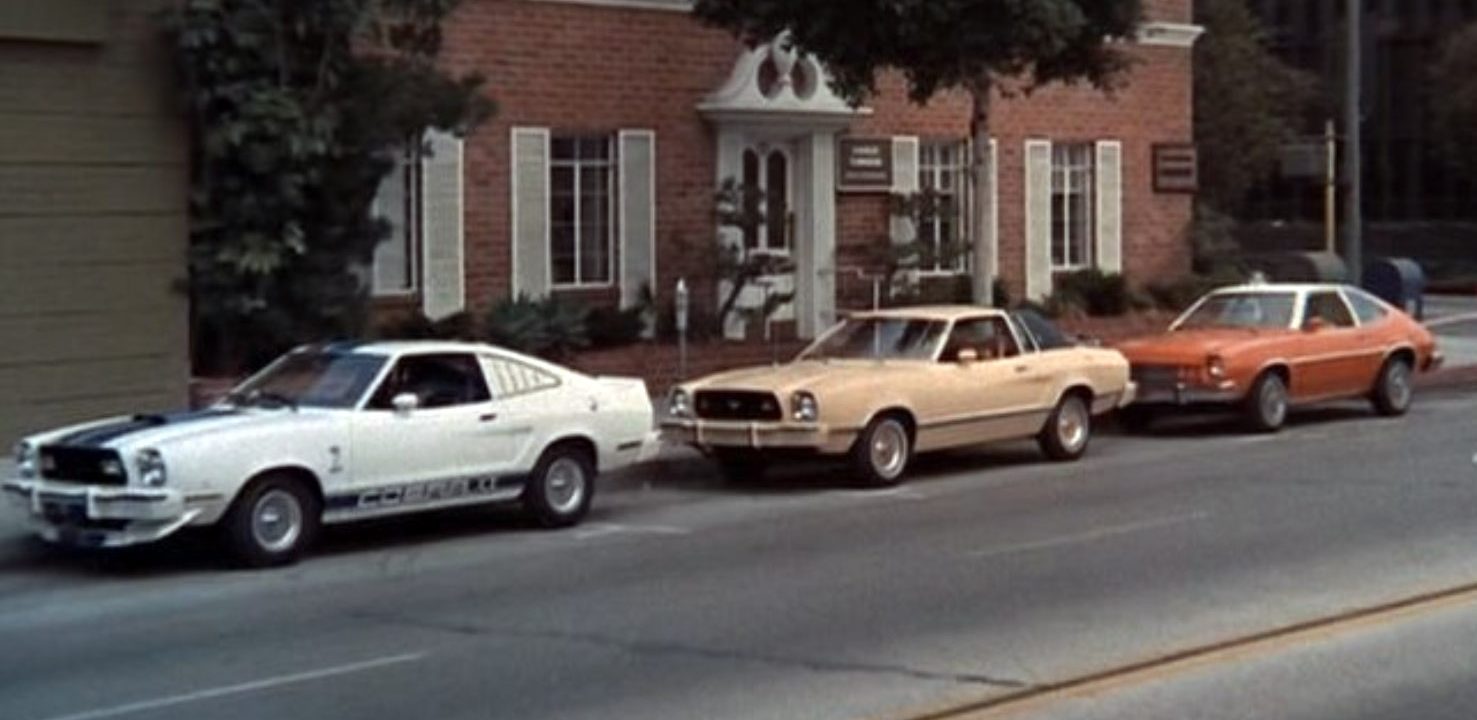
There were pictures of Farrah Fawcett (there’s her last name, in case you needed it) reclining on the hood of her white Mustang II Cobra II that gave me funny feelings down below, and Farah herself probably should have thought more about what was below her Cobra – looks like she took out a few parking blocks with that spoiler up front:
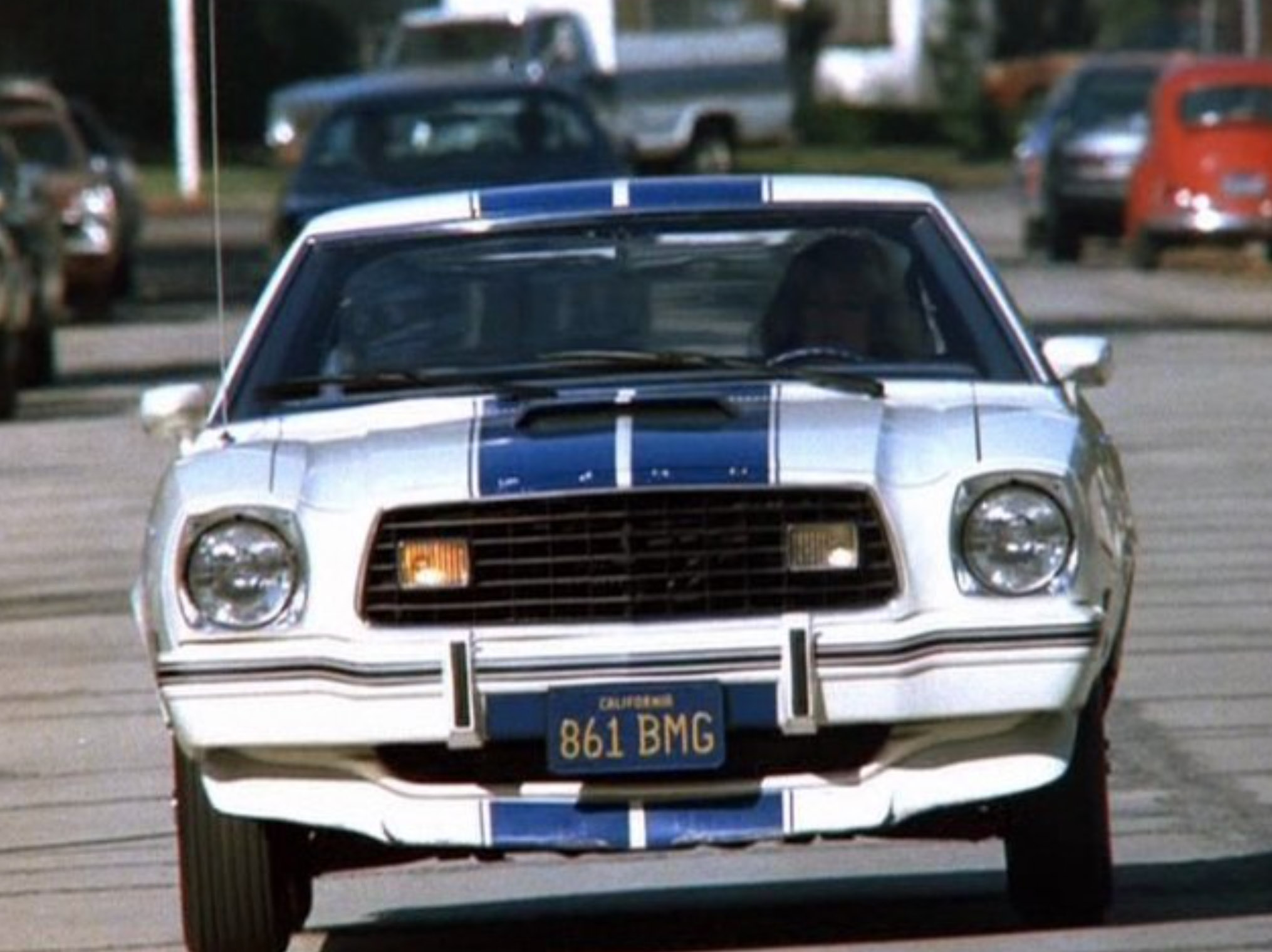
For mid-1977, Ford made changes to the “appearance” package, but it was still called Cobra II. We know this because there were graphics down the side of the car that said COBRA in nine-inch-tall letters visible from satellites. Yes, people really signed up to make four years’ worth of payments on something with lurid stickers your twelve-year-old would be embarrassed by.
Notice how they dramatically improved the aerodynamics of the revised Cobra II by turning the fake hood scoop around 180 degrees. For reference, the Porsche 928 was released in 1978, and this Pinto-based sports coupe was the best one of the top three car makers in the Western free world could do.
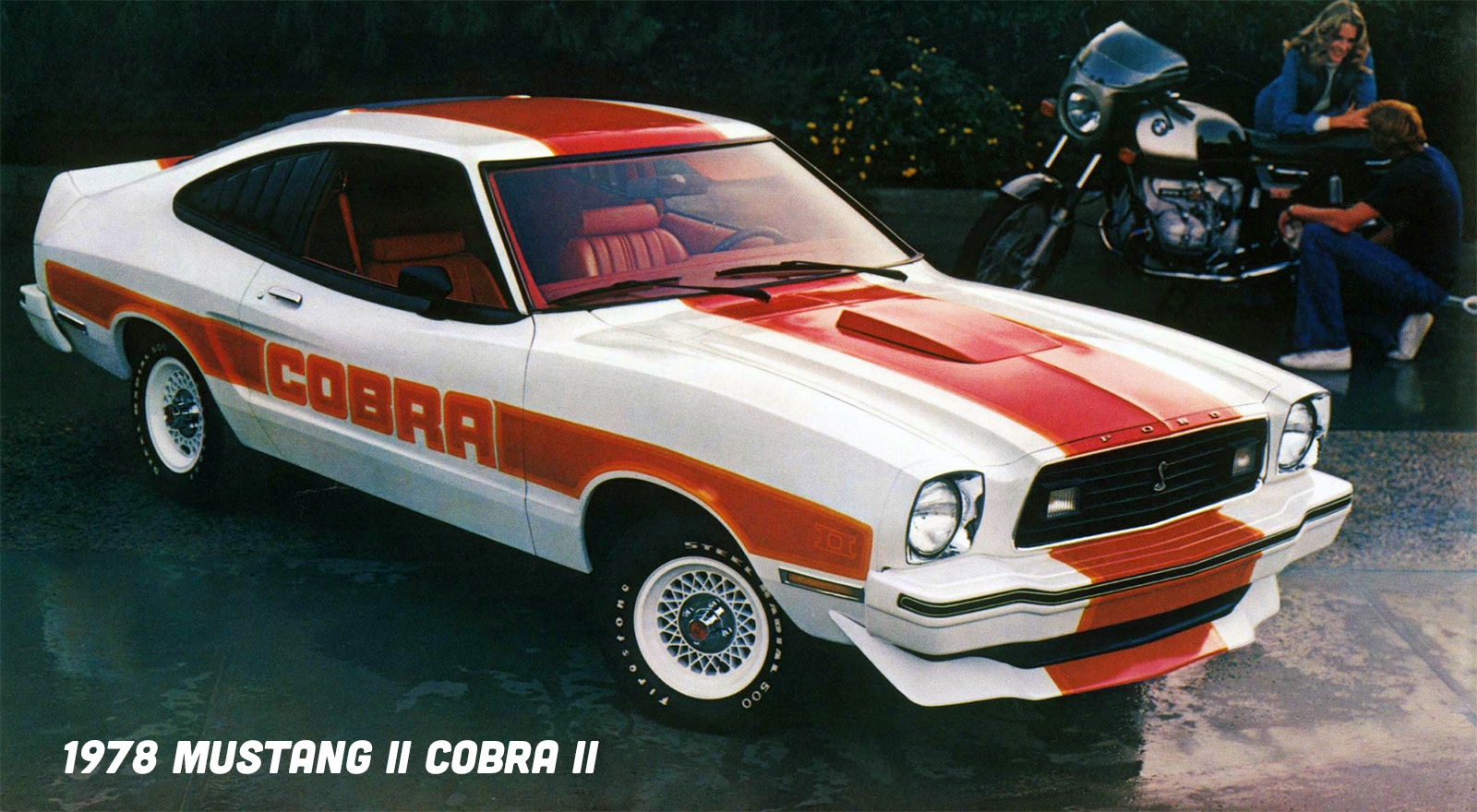
Unfortunately, Ford was still getting caught in the shadow of the GM coupes that copied them a decade earlier. Things got worse in 1977 when Burt Reynolds appeared behind the wheel of a black-and-gold Trans Am that took seventies automotive “supergraphics” to an all-time high.

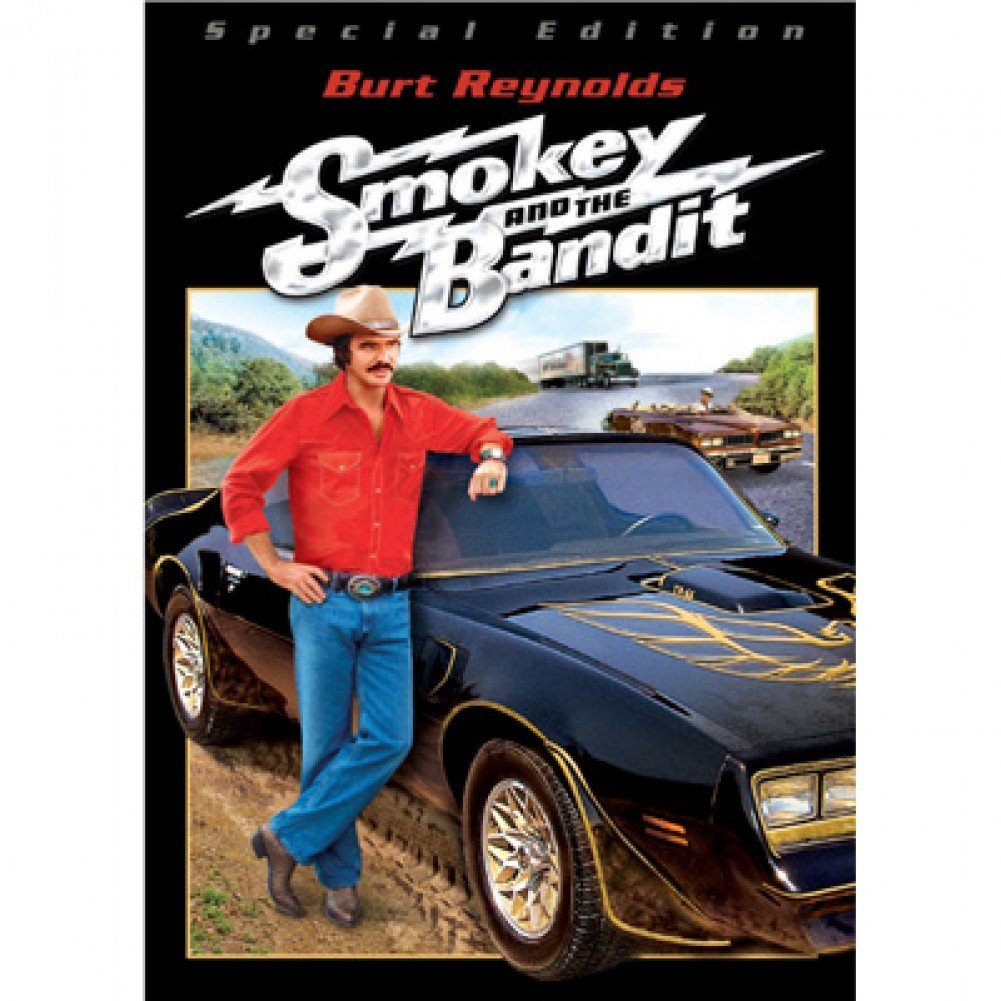
Now Ford had a problem. With Smokey and the Bandit cleaning up at the box office, what was Ford to do?
Eastbound And Down
Could the Mustang II find some way to avoid total embarrassment despite not having anything to combat the great Screaming Chicken? Of course it could; black paint is available to everyone. Ford’s answer to the Bandit for 1978 was the King Cobra, now available in a black-and-gold color scheme with hood-smothering decal to show GM that Dearborn wasn’t backing down.
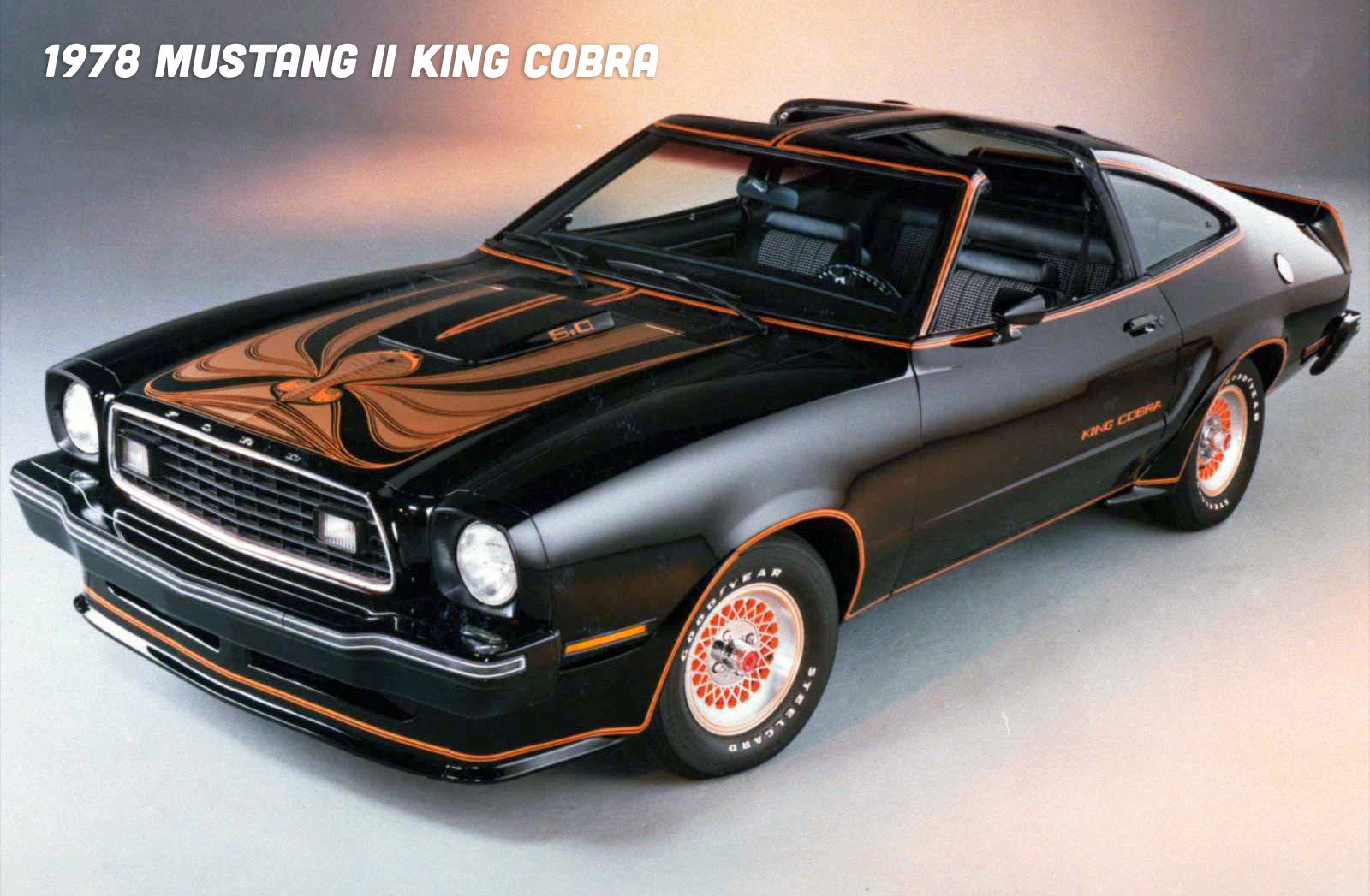
With a deep air-dam type spoiler, color-coded lacy spoke wheels, Trans Am-style wheel flares, no quarter louvers, and a reverse hood scoop, the King Cobra actually did look better than the garish Cobra II. Honestly, to me, the only really objectionable part of the fastback Mustang II is the front end; the rest of it is rather nicely resolved (and yes, Jason, it has amber rear turn signals).
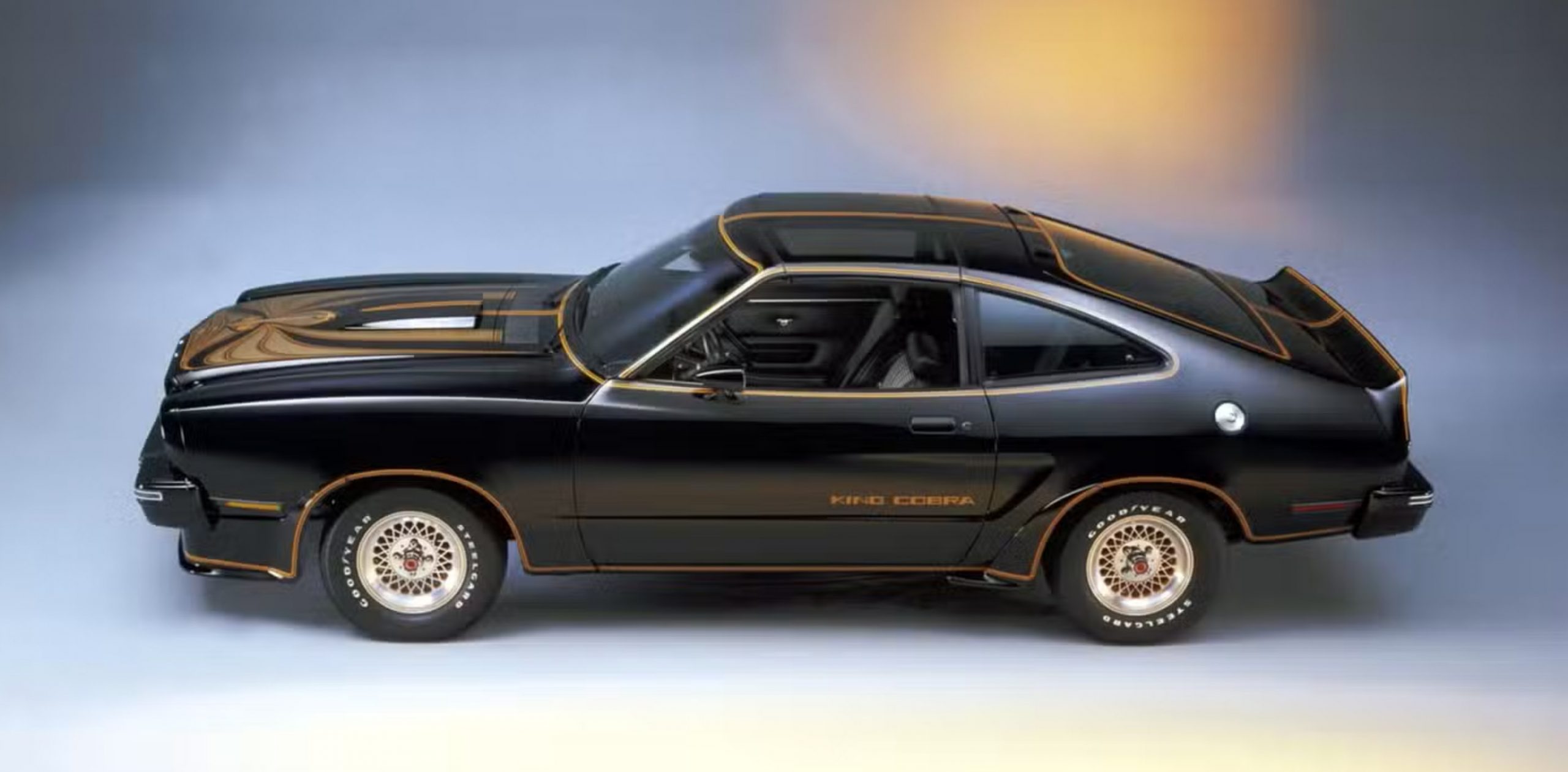
I’m guessing that black was a popular color, though red, silver, blue, white, or a very-seventies brown were also available. The red is actually quite fetching, and the T-Top roof with a black targa bar was available as an option to match the Pontiac F-body for lack of water tightness.

Graphics were far more subtle on the King Cobra than on the Cobra II, except for the hood. Here, you can just imagine the design brief for the art department at Ford saying, “Give us a screaming chicken, but make it a snake.” Note also that the King Cobra was the first Mustang to use the metric Vanilla Ice-checked “5.0” description of the Windsor’s engine displacement in the graphics, again in a nod to Pontiac’s “6.6” nomenclature.
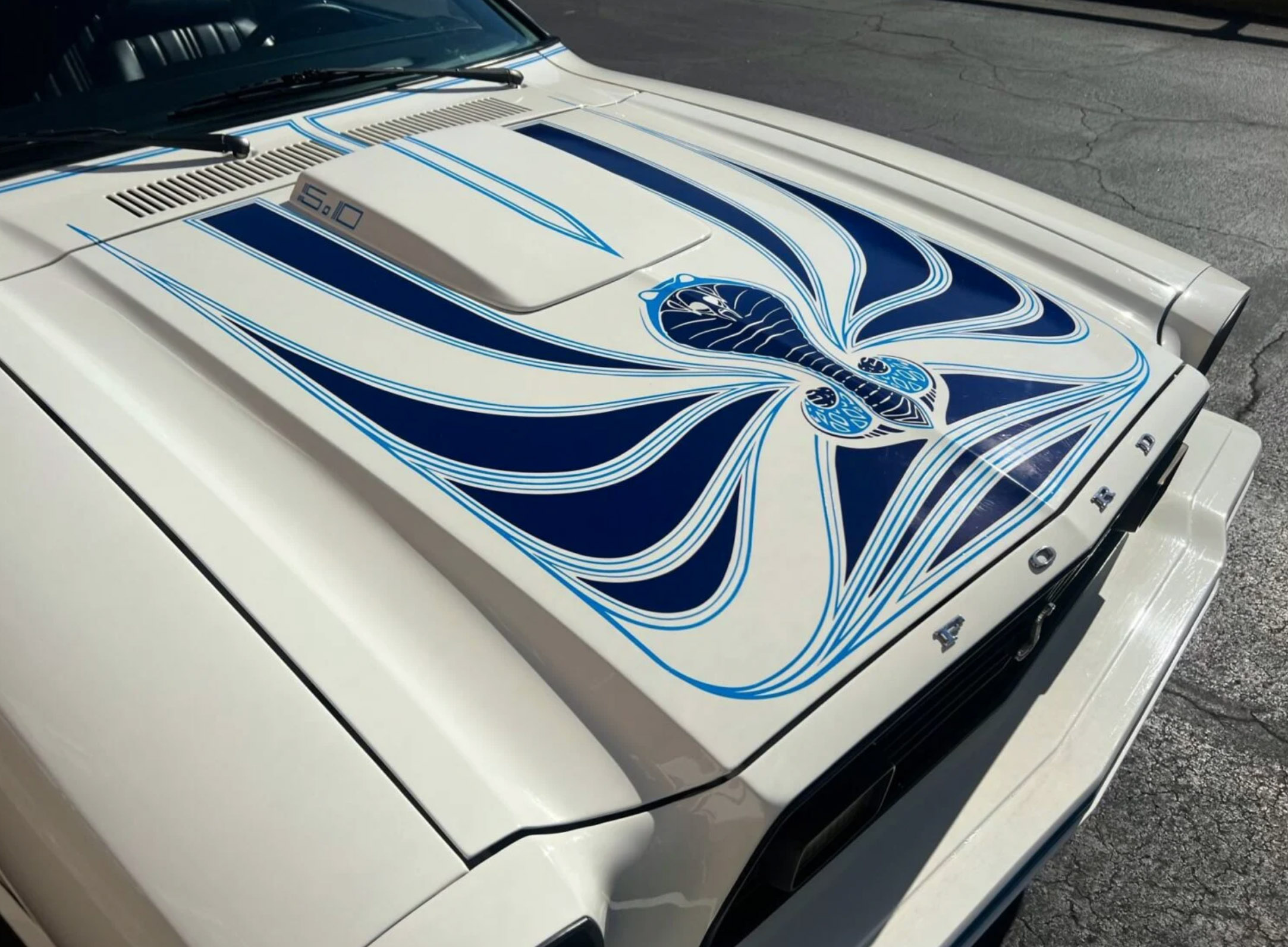
As with the Trans Am hood, the King Cobra’s art is over the top and silly but admirably done – those stylized flames have to make you smile. And man, look at those blue wheels!

Unlike the Cobra II “appearance package,” all King Cobras thankfully had the performance suspension as standard, as well as the V8 with either a four-speed manual or the more popular automatic. For this top-level offering, Ford took the still-140-horsepower V8 available in all Mustangs and hopped it up by doing absolutely nothing. No, really: they didn’t do squat to pump it up at all for the King Cobra.
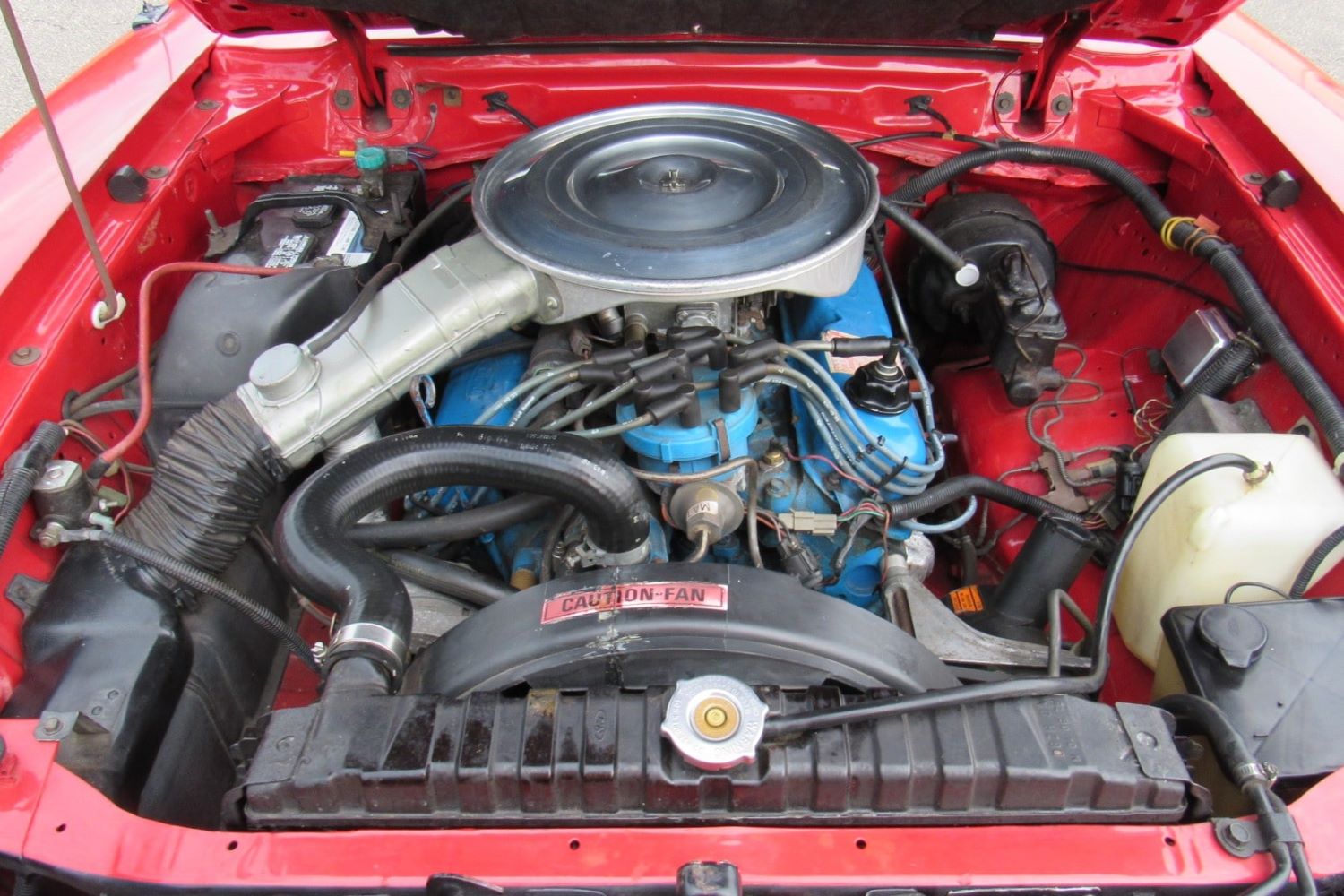
Single exhaust, two-barrel carb. Zero to 60 mph took around 10.5 seconds, and this gilded chariot topped out at around 106 mph. That’s a few tenths of a second faster than, well, a VW Rabbit. Yeah, Burt’s Trans Am might get knocked for its 200- horsepower 6.6-liter Pontiac motor, but it was a rocket sled next to this Mustang.
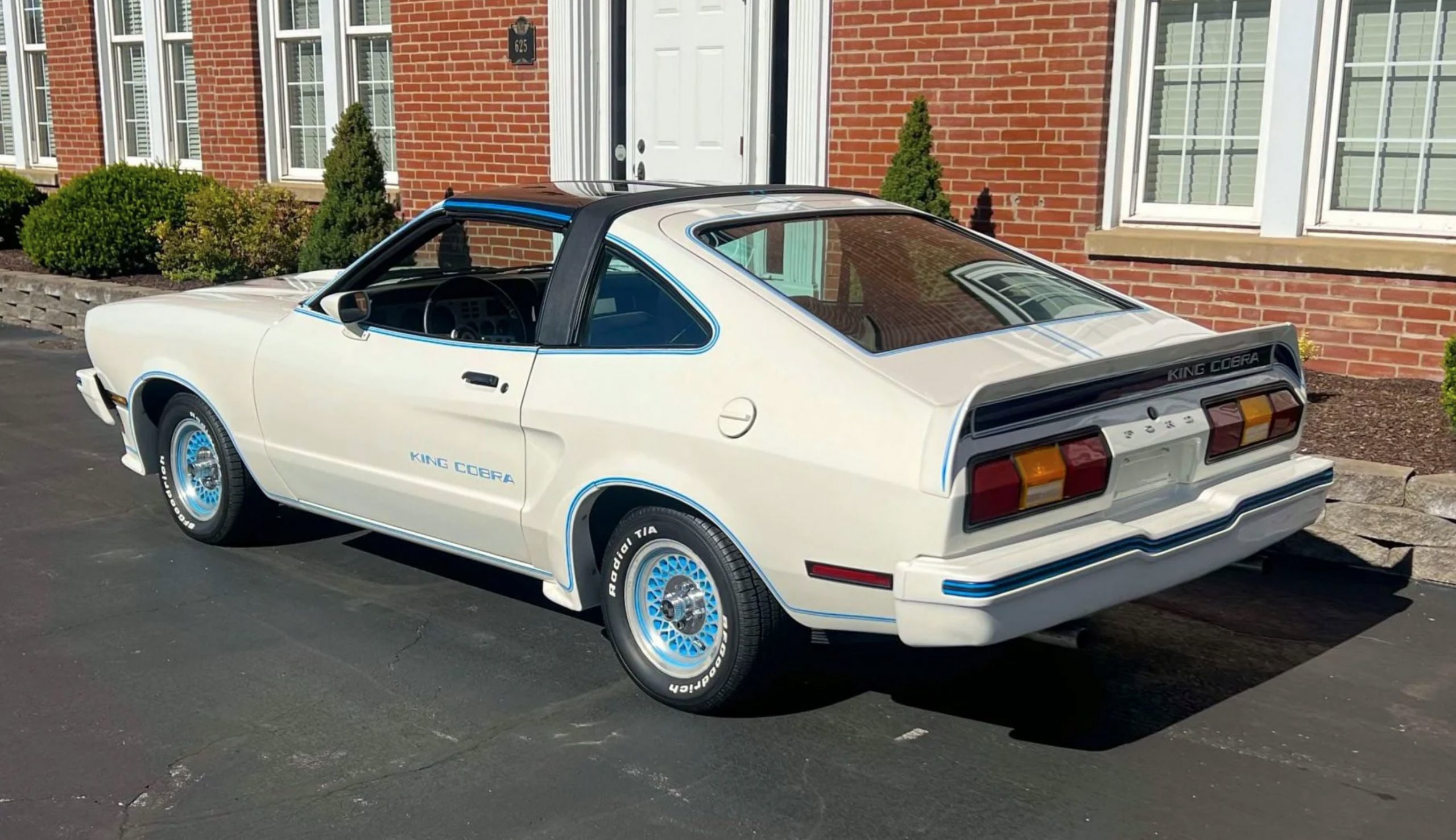
Worse than that, the Mustang II got a bad rap from publications like Road & Track and Consumer Guide for its subpar ride, sketchy handling, and poor seating position. At least the interior was rather simple and functional, with a full set of gauges in an aluminum-finish dash without the flashy “engine-turned finish” of the Trans Am.

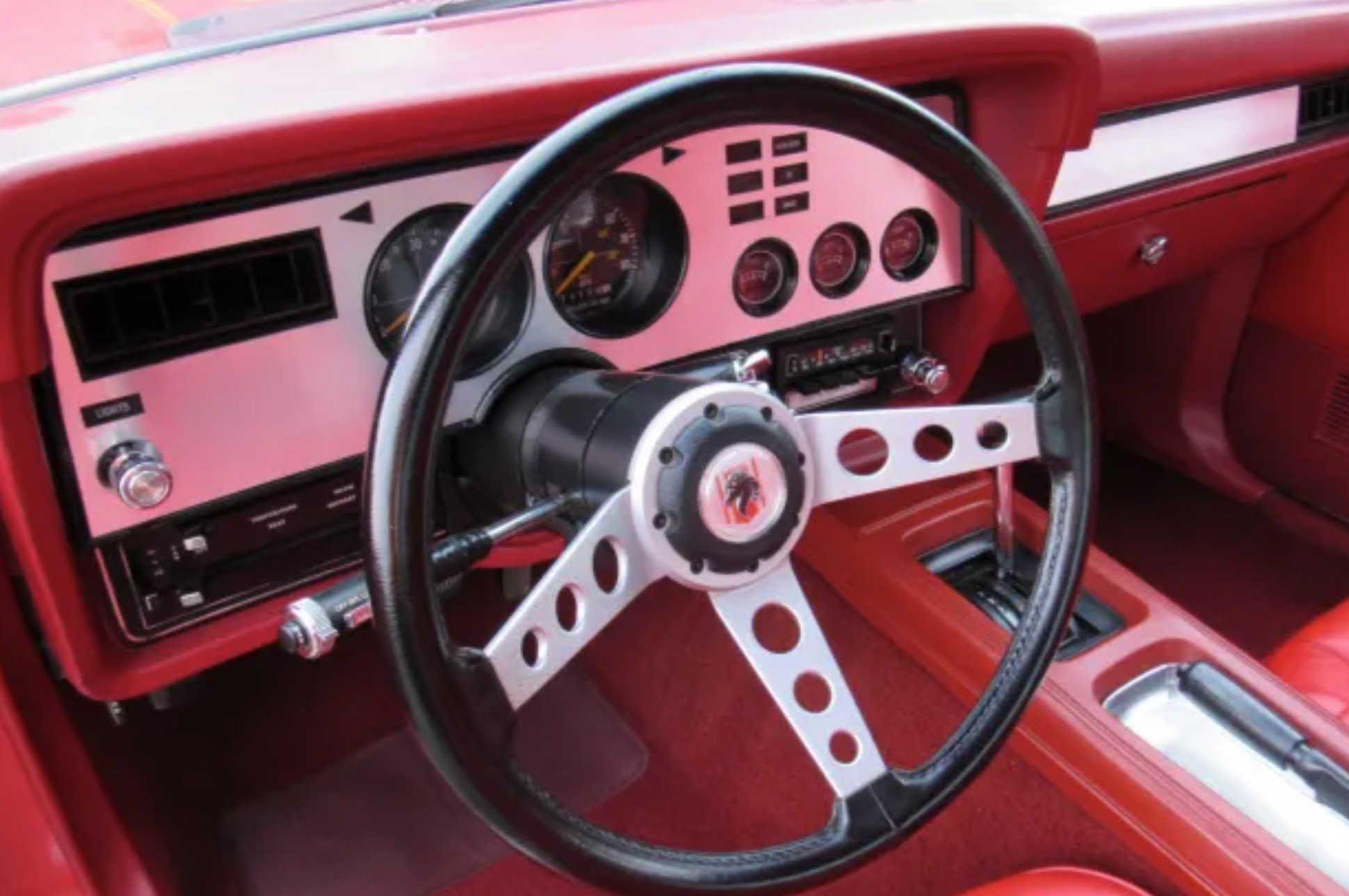
Like it or loathe it, the King Cobra was a short-lived one-year offering. Sources vary, but anywhere from a mere 4,313 and 4,971 King Cobras were produced in the last year the Mustang II was made. Considering what the team at Ford had to work with on this lame duck Mustang, they could have done a lot worse.
Fox On The Run
If nothing else, the Mustang II kept the famous Ford nameplate alive during a time when other pony car legends vanished. The “puny car” initiated a much-needed reset for Ford’s sport coupe that helped pave the way for the much-lauded Fox-body model that premiered the year after the King Cobra and Mustang II were discontinued. That was the start of the second coming of the Mustang, and subsequent offerings ultimately ended up pushing the rivals from GM out of existence not once, but twice.
To fault the Mustang II for not being a convincing Camaro fighter might be like calling Sofia Coppola a bad actress; it’s not what either one was supposed to be in the first place. In retrospect, the Cobra II and back-in-black King Cobra actually worked a lot better than they had any right to.
As much as I’m not a fan of it, I sometimes feel like all of the hatred heaped onto the Mustang II is uncalled for. Can something that’s a runaway sales success really be considered a “failure” or “worst ever”? That’s a conundrum for the ages, and one that the Mustang II will always be the perfect case study for.
Top graphic image: Ford

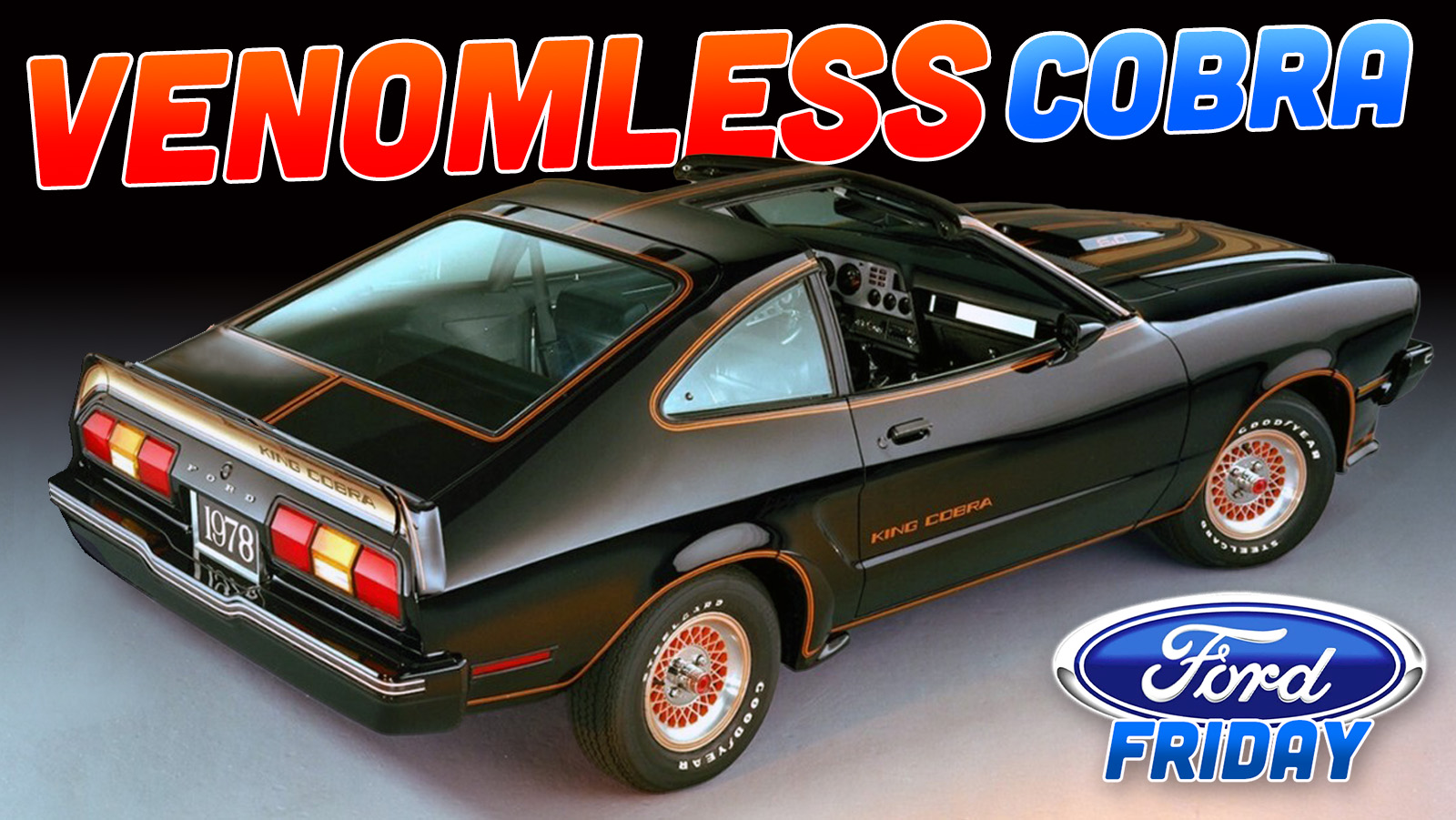








There were two King Cobras that would regularly show up to a street racing spot on the west side of Houston (Brittmoore) back in the pre-Fast & Furious days. One was black and gold and the other was white and blue. Both sounded great but even modded were hilariously slow. They did, however, look as good as a Mustang II possibly could, so everybody would cheer when they rolled up. I still love the wheels on them, especially the blue inlayed ones.
You laugh, but I think the sea of grayscale that the modern automotive landscape has become would benefit from some appearance packages. And frankly, the kind of douches that drive those kinds of Mustangs probably should be limited to something that puts out less than 200 horsepower.
I choose to believe that Carroll Shelby’s greatest regret to his dying day was selling the “Cobra” name to FoMoCo.
14 year old neighbor said she was only going to marry somebody who drove one of these-
I bet the 3.0L Ecoboost from the Ranger/Bronco raptor would fit in that engine bay and give that snake some real venom.
And b/c automotive hilarousiness, I believe this was one of the exhibits cited in Ford’s defense in the Ford – Carroll Shelby legal spat over who really owned the Cobra name.